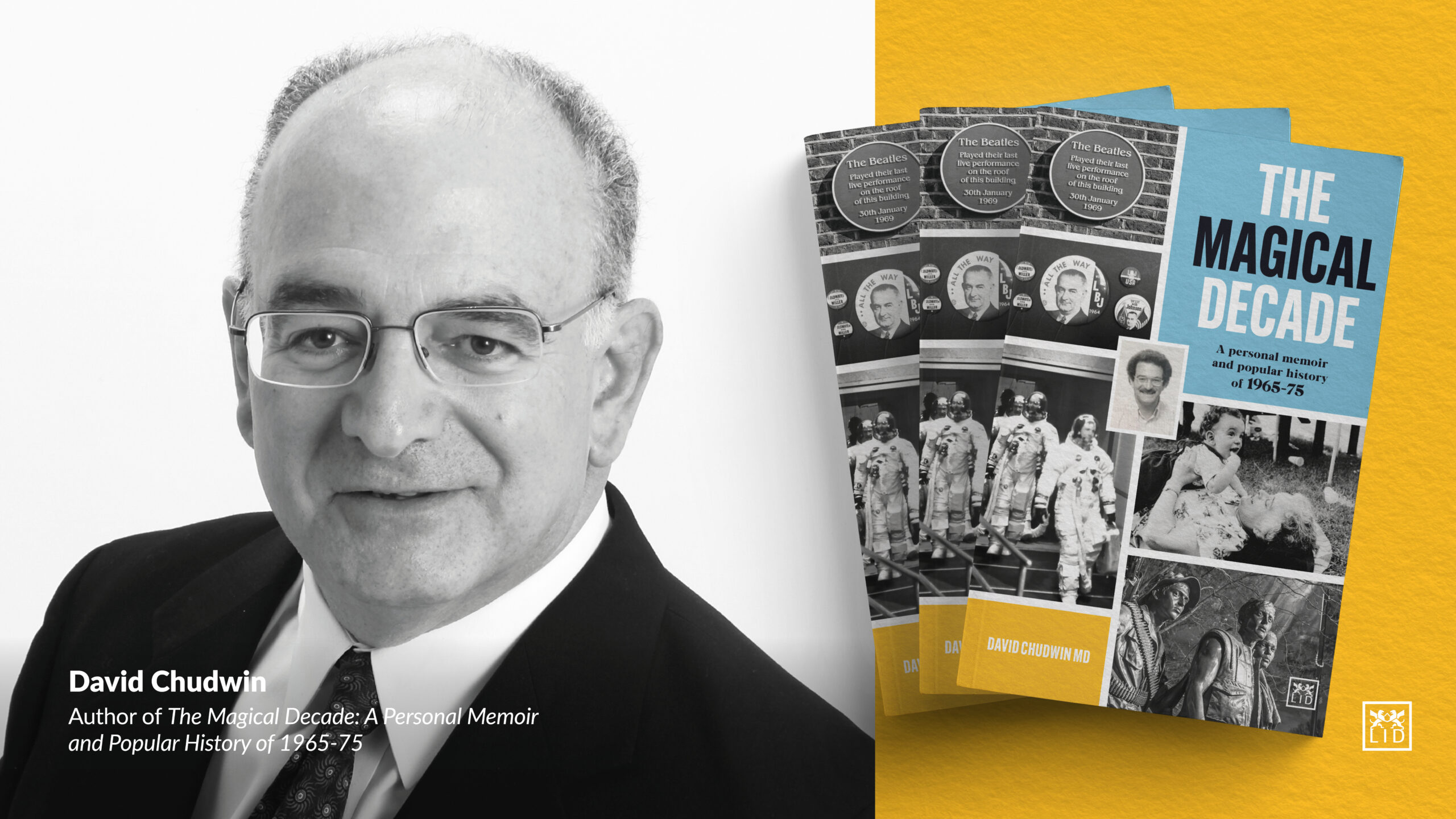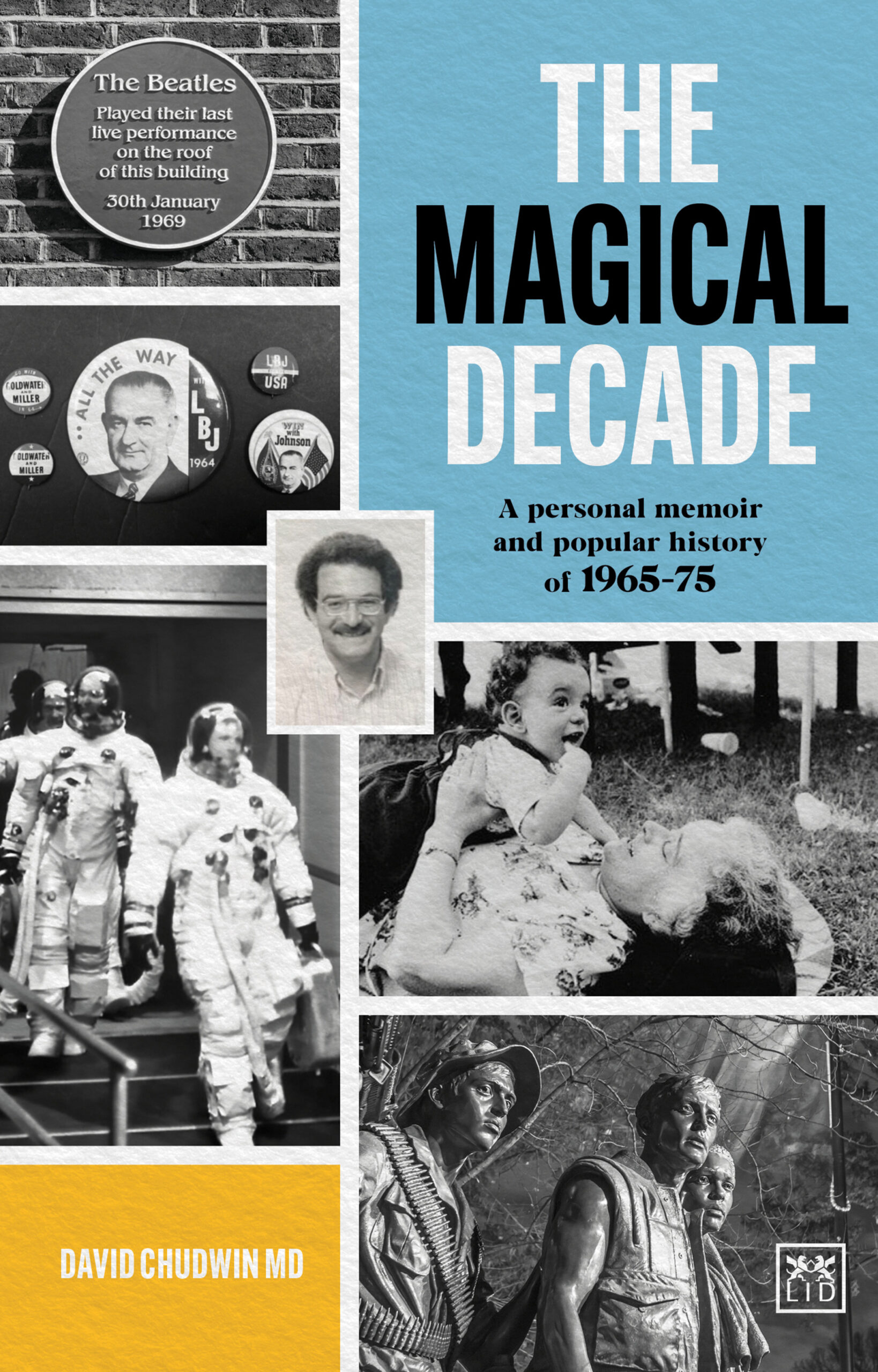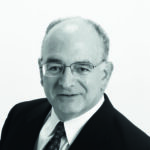|
David Chudwin’s Three Most Memorable Events from 1965-75
David Chudwin’s Three Most Memorable Events from 1965-75

By Guest Contributor David Chudwin
Author of The Magical Decade, David Chudwin, shares the three most memorable events he attended in 1965-75.
It was May 3, 1971 and thousands of anti-Vietnam War protesters were gathered in Washington D.C. to try to shut down the US capital city. They marched under the slogan, “If the government won’t stop the war, we’ll stop the government.” I was there covering the event for The Michigan Daily, the student-run newspaper at the University of Michigan, which had a long history of covering out-of-state national political events.
Mid-morning I was with throngs of demonstrators outside the imposing Department of Justice federal building, just north of the National Mall with its many museums and monuments. Phalanxes of policemen surrounded the DOJ complex as demonstrators chanted anti-war slogans such as “Peace Now!” and “One, two, three, four, we don’t want your f***ing war!” There was a stand-off between the police and protestors until an order was given.
Squads of police, their batons drawn, then started to advance and indiscriminately arrested anyone in the area. Protesters who did not surrender were knocked to the ground, subdued with Billy clubs, and their wrists restrained with plastic ties. Those arrested were herded to pens outside RFK Stadium and the Washington Coliseum. There were mass arrests of over 12,000 people over the next three days.
I had a Daily press pass but realized that police were arresting first and asking questions later. As the police approached, I looked around and saw the Smithsonian Museum of Natural History a block away. I ran to the north entrance at 10th Street and Constitution Ave. Once inside, I saw a large Tyrannosaurus rex skeleton. I decided to pretend I was a tourist interested in dinosaur fossils. My “disguise” was I had no beard or mustache, I was wearing a button-down shirt, and I wore leather shoes instead of sneakers. I went up to the T. rex skeleton and stared intently at it as a few policemen stormed the museum entrance. My heart was pounding as the police entered the gallery and dragged away a couple of protestors. My disguise must have been successful because the officers ignored me as they apprehended others. As they exited, I breathed a sigh of relief.
Since then I have maintained that a dinosaur skeleton saved me from arrest. When I see a dinosaur fossil, especially a T rex, I get a warm and fuzzy feeling, grateful for my escape from arrest. This incident was one of several exciting events I had during The Magical Decade.
Musically, my greatest musical experience was seeing The Beatles live and in concert on August 24, 1965, at the start of The Magical Decade. The early 1960s were dominated by The Beach Boys, Elvis Presley, Jan and Dean, The Four Seasons, and other American groups.
Across ‘the pond,’ in England, a new sound was developed, pioneered by The Beatles. The group had been formed in 1960 with John Lennon, Paul McCartney and George Harrison as the core; drummer Ringo Starr was added two years later. Their first international hit was “Love Me Do” in 1962 followed by “She Loves You” the next year. Their status as the Number One rock band in the world was cemented by their first appearance on The Ed Sullivan Show on television in February 1964.
Their American tour a year later was an opportunity to see the group perform outdoors in my hometown of Chicago. My Uncle Mike, who was in the music business, was able to get four of the sold-out tickets to the afternoon performance at Comiskey Park in Chicago. Comiskey Park, one of the oldest baseball fields in the U.S., was home to the White Sox; it only rarely served as a concert venue. It was an old concrete and iron structure surrounded by vast parking lots on the South Side of Chicago. Unlike Wrigley Field, home of the Chicago Cubs on the North Side, there was little greenery either outside or inside the stadium.
The precious tickets were designated for Uncle Mike’s sons, Steve and Bob, and he graciously gave the other two to me and my younger brother Jeff. I was 15 at the time and already a music fan. Like other teenage fans, I listened to the latest hits on portable AM transistor radios. Radio stations hired disk jockeys to promote new music and attract young listeners to boost ratings. Dick Biondi, first broadcasting on WLS Radio, was the most popular DJ in our area.
On August 24, 1965, we drove to Comiskey Park in the afternoon, parked in one of the concrete lots, hiked to the stadium, and then trudged up the long ramps surrounding the ballpark. We had seats in the upper deck which were high up but offered an excellent view of the field. There was a free-standing stage in the outfield of the ballfield. The upper deck seat tickets cost $4.50, equivalent to about $44 in 2023 U.S. dollars. Crowds started to gather until there were an estimated 25,000 people for the afternoon concert.
The Beatles had flown in from Houston at about 3 a.m. to the smaller Midway Airport, instead of the larger O’Hare airport, on instructions from the police who wanted to avoid any disruption at O’Hare. They later had a police escort to Comiskey Park where there were officers surrounding the inside perimeter of the field to prevent any fans from rushing the stage located in the outfield.
John, Paul, George and Ringo ran to the stage to the screams of the mainly teenage girls in the audience. In fact, that’s what I remember most about the performance itself — shrieking from the fans so loud one could barely hear the music despite many amplifiers.
They opened with “Twist and Shout” and concluded with “Help!” and “I’m Down,” according to the set list for the 8 p.m. concert. Both the band and the audience appeared to be having a great time. It was a real thrill for me to see live the top rock band in the world, a group that led the British Invasion over the succeeding Magical Decade.
I have been asked what was the most exciting of my experiences during The Magical Decade. The answer is surely seeing the Apollo 11 launch to the Moon from three miles away in Florida. In 1969 I was 19 years old and had been interested in space since 1957 since the Russians launched the first unmanned Earth-orbiting satellite. Years later in December 1968 when Apollo 8 and its crew were the first to fly around the Moon, my childhood friend Marv Rubenstein and I agreed to try to see a rocket launch in Florida the next summer during our college summer vacations.
I was attending the University of Michigan at Ann Arbor while Marv was at the University of Illinois Chicago Circle Campus. I had joined the staff of The Michigan Daily, where I was the de facto space reporter because I was pretty much the only science major (zoology for pre-med) and the only staff member interested in space.
The Daily Senior Editors authorized me and Marv to cover Apollo 11 (although they would not fund the trip because covering rocket launches was not high on the list of their priorities). The harder nut to crack was to obtain NASA press credentials because, until then, NASA regarded college journalists as just students. Our opportunity arose when Daily senior editor Jim Heck was named to head the College Press Service (CPS) Wire Network in Washington, DC for the summer. CPS is a consortium of 500 college newspapers and the Wire Network was a way to exchange reporting before the Internet. Jim argued in person with NASA in Washington that we would be covering Apollo 11 for all the college newspapers, and not just The Daily. He must have been persuasive because Marv and I received press passes about a month before the launch, scheduled for July 16.
Marv and I flew down to Florida on July 13 on the same plane as Mrs. Rose Cernan, the mother of astronaut Gene Cernan. We recognized her from a 1966 event we attended after her son’s Gemini flight. Arriving in Florida, she introduced us to several men who were picking her up as well as members of their own families. Three of the men would later walk on the Moon (Alan Bean, Jim Irwin, and Charlie Duke) and a fourth would take the first untethered space walk (Bruce McCandless).
The next three days were a whirlwind of exciting activities. We took special press tours including getting within 2,000 feet of the Apollo 11 Saturn V on Pad 39A, and being able to walk in the assembly building within 100 feet of the base of the Saturn V for the next mission. We went to the floor of the Launch Control Center and saw the consoles of the launch controllers. At night, we viewed the Apollo 11 Saturn V illuminated with high-intensity xenon lights. We also attended press conferences with NASA Center directors including Wernher von Braun and Robert Gilruth; NASA officials such as George Low, Dr. Charles Berry, and astronaut Deke Slayton; a private interview with Dr. George Mueller, head of manned spaceflight; and a remote interview of the Apollo 11 crew led by Walter Cronkite.
On the day of the launch, July 16, we got up at 4:30 a.m. and took NASA buses to the entrance of the Manned Spacecraft Operations building where the crew was suiting up. We watched as Neil Armstrong, Mike Collins and Buzz Aldrin walked out in their white spacesuits down the ramp to their ‘astro-van’ to take them to the launch pad. It was thrilling to see the crew take their last steps on Earth before heading to the Moon.
To watch the launch, we took another NASA bus to the area called the VIP Viewing Site. NASA had invited almost 5,000 special guests to see the launch, ranging from former President Johnson to TV personalities Johnny Carson and Ed McMahon. Marv and I staked out a site on a grassy area in front. We were three miles from Pad 39A, the closest spectators were allowed in case the rocket exploded.
The countdown went smoothly and at precisely 9:32 a.m. the rocket ignited. We saw a small dot of bright yellow flame at the base of the Saturn V and then flames and smoke shot out either side of the pad, deflected by trenches. The rocket just seemed to sit there and all was quiet. It took about 10 seconds for the Saturn V to slowly rise above the launch tower.

Then the sound began to hit us. We could not only hear the roaring of the five F-1 engines but we could feel it. The ground shook and sound waves buffeted our chests. The loud, crackling sound was overwhelming. As the rocket rose, we could feel the heatwaves from the 7.5 million pounds of thrust. As the rocket rose in the partially cloudy sky, there were cheers and applause from the estimated million spectators who viewed the launch from Florida.
It was a life-changing experience to witness the Apollo 11 launch from so close. The episode propelled my interest in space, and 50 years later I wrote a book about it, I Was a Teenage Space Reporter (LID Publishing, 2019).
The Magical Decade was a time of unprecedented changes but these three events—the Mayday arrests, hearing the Beatles live, and being an eyewitness to the Apollo 11 launch— were some of the most memorable to me.
ABOUT THE AUTHOR
Suggested Reading
 From attending the Beatles concert in Chicago in 1965 to being tear-gassed during Vietnam War protests; from reporting on site the first Moon launch in 1969 to experiencing revolutionary changes in technology thereafter; from growing up in segregated Chicago to observing liberation movements for women, African-Americans and gay Americans – these were the times the author attended high school, college and medical school in 1965-75. In this book, he synthesizes by topic his memories of the time with brief histories of the events and their backgrounds, making this a unique personal memoir of a life-changing decade for many people in America.
From attending the Beatles concert in Chicago in 1965 to being tear-gassed during Vietnam War protests; from reporting on site the first Moon launch in 1969 to experiencing revolutionary changes in technology thereafter; from growing up in segregated Chicago to observing liberation movements for women, African-Americans and gay Americans – these were the times the author attended high school, college and medical school in 1965-75. In this book, he synthesizes by topic his memories of the time with brief histories of the events and their backgrounds, making this a unique personal memoir of a life-changing decade for many people in America.

